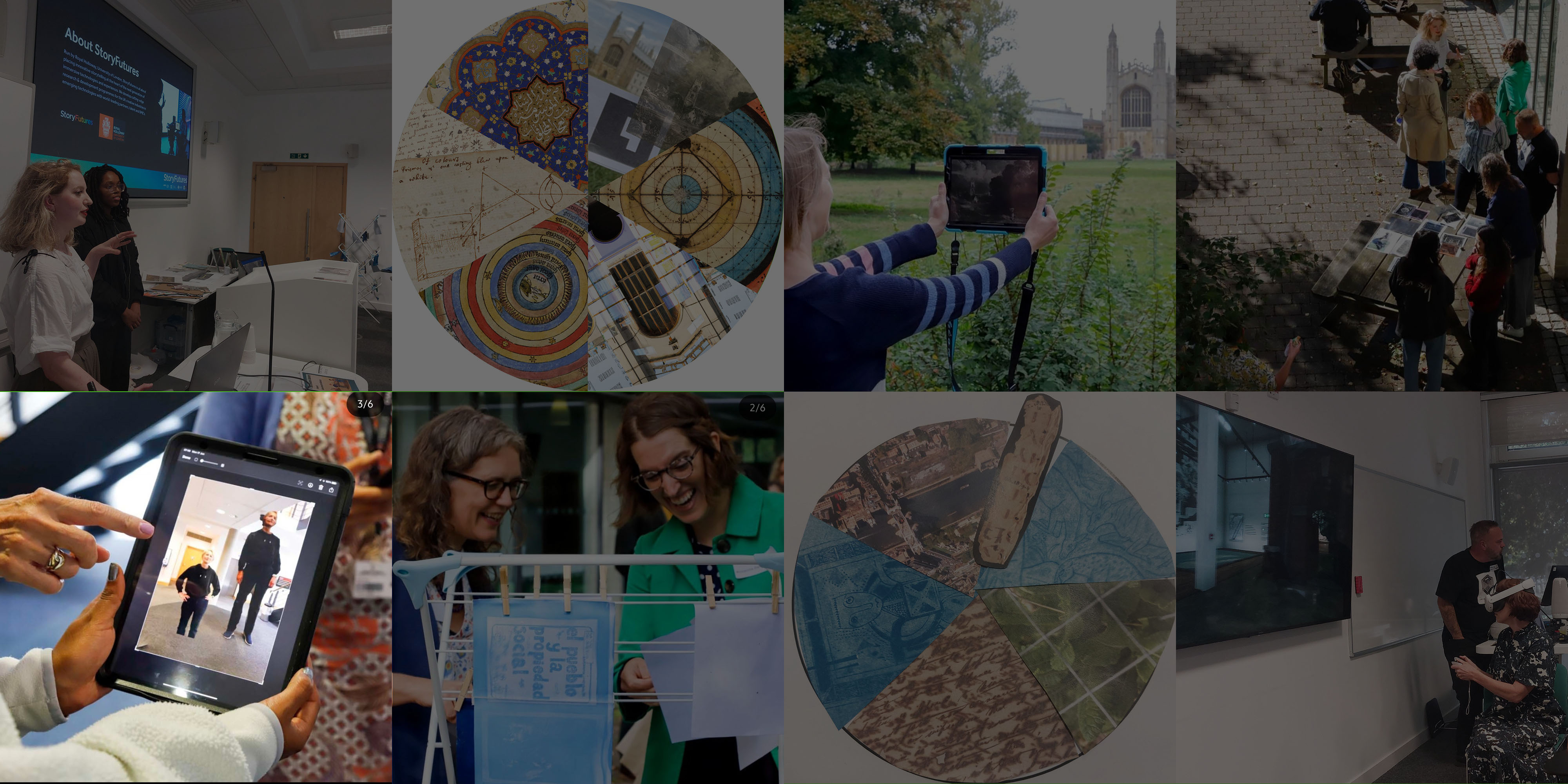EDC Symposium: Part Three
by Andy Corrigan
Processes of Collaboration
Activity 2: Big Me Little Me
Our second practical activity, ‘Big Me, Little Me’, was facilitated by Helen O’Neill and Destiny Lawrence from the StoryFutures Team, who I’d first encountered at the XRchiving event at King College London in May 2024. The task firstly involved using the Scaniverse App to create virtual 3D scans of each other, before then placing these “digital human” avatars into an augmented reality view side-by-side with our real selves, and taking photos that can be printed.
This process required participants to work together, with a variety of mobile devices, to scan and then photograph each other, and was a great way to get into the collaborative mindset. It was also a further opportunity for yet more fruitful creativity, a chance to incorporate a sense of fun and humour, but most significantly it was also a way to embody our own individual relationship to the virtual/digital landscape.
Explore photographs taken during the activity, as well as those created as outputs, in more detail using this IIIF viewer:
Processes of Collaboration – Panel Session
One thing that stood out during the Acts of Creation session is that those acts often involve collaboration of some kind, and that libraries can be a central factor. So this next panel session was about drilling-down into the creative ways in which libraries support and enrich those processes of collaboration. Interdisciplinary research and collaboration in complex digital landscapes might require interpreter-translators (Parti & Szigeti, 2021), or people who identify as a connector/translator/cycler (Kram et al., 2012), and as we heard during this panel, librarians and libraries seem to be well suited these often overlapping roles.
Following on from Vicky Grant’s earlier presentation, Tomás Rocha Lawrence (Students’ Union Liberation & Inclusions Officer, University of Sheffield) shared his experiences of collaborating on the ‘Creative Library Project’. It was wonderful to hear perspectives from a student voice that demonstrate the immense value that such creative and collaborative projects offer them, not least also helping them to feel invested in a community that is united by shared values.
The visual arts are perhaps not a usual mode of thinking or medium for libraries, places usually more associated with written language. Sally Kent (Curator of Royal Commonwealth Society Collections, Cambridge University Library) and Jenni Skinner (African Studies Library, University of Cambridge) reflected on two recent projects that had involved collaborating with artists on creative interventions in the archive. This challenged normal expectations of outcomes and deliverables, as well as the more day to day practicalities, like access. Projects such as these build trust and demonstrate the power of embracing the unexpected, whilst also feeding and informing the development of more structured approaches to future collaboration. These factors are made even more pertinent, as Sally and Jenni have shown, through the lens of decolonisation.
As Nel Coleman (Participatory Research Officer, University of Edinburgh Library) demonstrated next, collaboration isn’t exclusive to specialists. Participatory research projects can facilitate a collective navigation of many varied and challenging contemporary issues by making the most of co-production, citizen science, community led research and involving the public. Nel’s focus on the importance of the partnership between ‘lived experience specialists’ and researchers was particularly inspiring and relevant. Our collections can play a pertinent role in grounding these processes in the past, which can give them fresh relevance.
Another theme that fed through into this session was one of library spaces, the focus of which was distinctly evident in the final presentation of this panel, as we heard about the Collection Wall from Alice Bodanzky and Douglas McCarthy (Delft University of Technology). By embedding technology into the very central four-storey bookshelf wall that’s a central feature of their library, they have perhaps given their collections what might equate to a pacemaker device, a lifeline that keeps the blood pumping through the library space. The impact of this project might not be so keenly inspiring without the collaboration that it has involved and nurtured, and the way it is driving and inspiring future ideas.
This session made it clear that whatever the intended outcome, the processes of collaboration not only help achieve, but also lead to many unexpected outcomes too. Each collaboration shares some commonalities:
- A capacity to grow and inspire - A purportedly endless and circular nature.
- The ability to bridge past, present and future knowledge.
- Whether tangible or virtual, they connect us, the places we inhabit, our collections, those things we keep, and our experiences.
- Regardless of scale they are hard but rewarding work for all involved.
- An ability to tackle some extremely challenging issues, often making them more manageable and human.
- They are all capable of reaching new audiences and collaborators.
Whilst the processes of collaboration might be at the less tangible end of the spectrum of outcomes, it is perhaps these that contribute most to the rich depth and texture of libraries.
This post has been funded by the AHRC-RLUK Professional Practice Fellowship Scheme for research and academic libraries.
